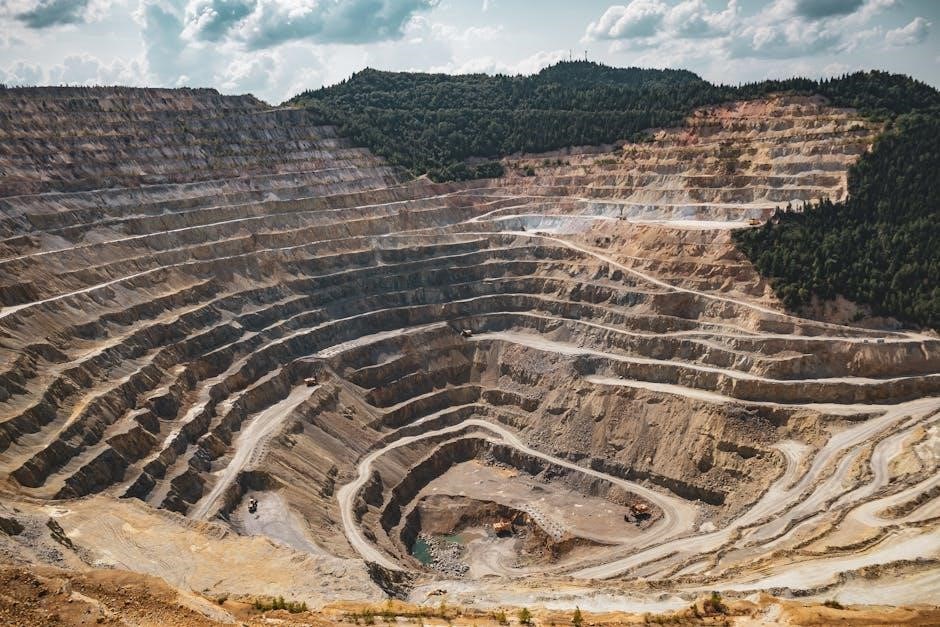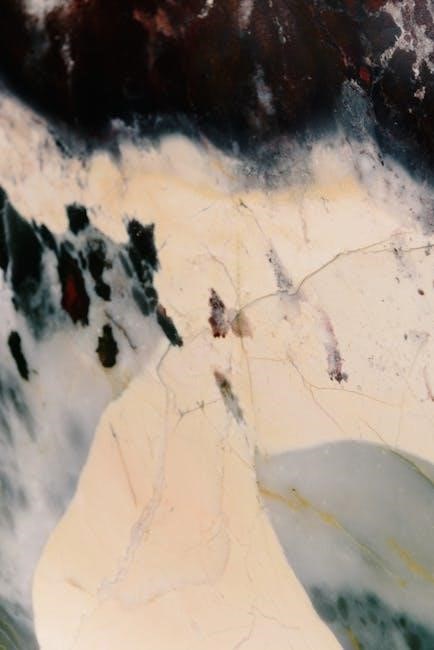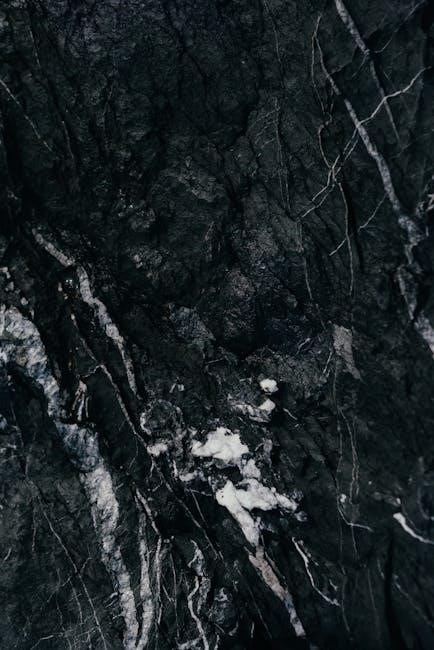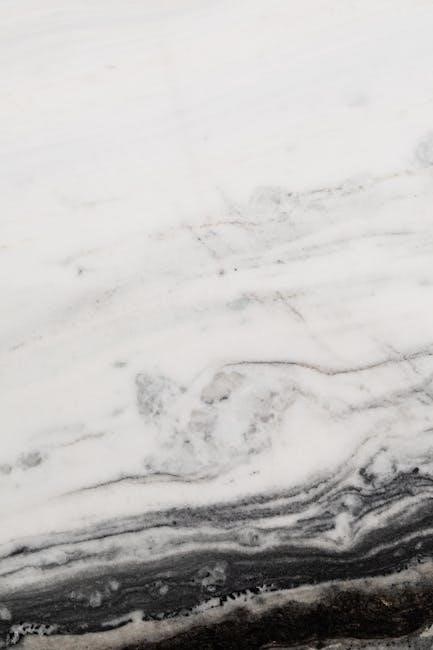Embark on a fascinating journey into the world of geology! This comprehensive
guide provides essential tools and techniques for identifying rocks and
minerals. Learn about key properties, rock types, and practical identification
methods for enthusiasts of all levels.
Welcome to the captivating realm of rock and mineral identification! This
section serves as your gateway to understanding the fundamental principles
and techniques involved in distinguishing various rocks and minerals.
Whether you’re a budding geologist, a seasoned rockhound, or simply curious
about the natural world around you, this introduction will equip you with
the basic knowledge needed to embark on your identification journey.
We’ll explore the significance of identification, delving into why it’s
essential for collectors, hobbyists, and professionals alike. Understanding
the composition and formation of rocks and minerals enhances our appreciation
of Earth’s history and processes. This guide will also introduce the essential
tools and resources available to aid in identification, from simple hand
lenses to comprehensive field guides. Get ready to unlock the secrets hidden
within the rocks beneath your feet!

Fundamentals of Mineralogy
Delve into the core principles of mineralogy. Understand mineral composition,
structure, and formation. Explore key properties like hardness, streak, and
cleavage. This foundational knowledge is crucial for accurate mineral
identification and appreciation of Earth’s building blocks.
What are Minerals?
Minerals are the fundamental building blocks of rocks, each possessing a unique
chemical composition and crystal structure. Defined as naturally occurring,
inorganic solids, minerals exhibit a characteristic internal arrangement of
atoms. This ordered structure gives rise to distinct physical properties,
aiding in their identification.
Unlike rocks, which are aggregates of one or more minerals, minerals
themselves are pure substances. Their formation occurs through various
geological processes, including crystallization from magma, precipitation from
aqueous solutions, and alteration of existing minerals.
Understanding the definition and formation of minerals is crucial for
comprehending rock formation and the Earth’s geological history. Recognizing
minerals is the first step to appreciating their significance in our natural
world and the role they play in various industries.
Key Mineral Properties
Identifying minerals involves observing and testing their key properties.
Color, though visually appealing, can be unreliable due to impurities.
Streak, the color of a mineral’s powder, is more consistent. Luster
describes how light reflects off a mineral’s surface, ranging from metallic to
dull.
Hardness, measured using the Mohs scale, indicates a mineral’s
resistance to scratching. Cleavage refers to how a mineral breaks along
planes of weakness, while fracture describes irregular breakage.
Specific gravity is a mineral’s density relative to water.
Other properties include crystal habit (shape), tenacity
(resistance to deformation), and special properties like magnetism or
fluorescence. By carefully assessing these properties, even beginners can
confidently identify many common minerals. Utilizing a mineral identification
key or guide alongside these observations enhances accuracy.
Rock Types and Their Identification
Discover the three major rock types: igneous, sedimentary, and metamorphic.
Learn how they form and the key characteristics to distinguish each.
Understanding these differences is crucial for successful rock identification
and geological exploration.
Igneous Rocks
Igneous rocks, born from the fiery depths of volcanic activity, solidify
from molten rock, either magma (underground) or lava (above ground). These
rocks are classified based on their composition and cooling rate, influencing
their texture and mineral content. Intrusive igneous rocks, like granite,
cool slowly beneath the surface, resulting in large, visible crystals.
Extrusive igneous rocks, like basalt, cool rapidly on the surface, forming
small or no crystals.
Identification involves examining color, mineral presence (quartz, feldspar,
mica), and texture (coarse-grained vs. fine-grained). Light-colored igneous
rocks typically indicate felsic composition (high silica content), while
dark-colored ones suggest mafic composition (high magnesium and iron).
Understanding these factors aids in accurately identifying various igneous
rock types.
Consider the environment in which the rock was found. Was it near a
volcanic region? Is it heavy and dense? Answering these questions will help
confirm your identification.
Sedimentary Rocks
Sedimentary rocks, formed from accumulated sediments, tell stories of ancient
environments. These rocks are classified based on sediment type: clastic
(fragments of other rocks), chemical (precipitated minerals), and organic
(remains of organisms). Clastic sedimentary rocks, like sandstone, consist
of cemented rock fragments, while chemical sedimentary rocks, like limestone,
form from mineral precipitation.
Identification relies on examining grain size, composition, and sedimentary
structures (layering, ripple marks). Grain size reveals the energy of the
depositional environment (fast-flowing rivers deposit coarse grains). The
presence of fossils or layering helps confirm the sedimentary origin.
Color can indicate mineral composition or the presence of organic matter.
Consider the rock’s texture, hardness, and any fossils it might contain.
Does it have distinct layers? Can you scratch it with your fingernail?
These observations will help you distinguish between different sedimentary
rock types and understand their formation.
Metamorphic Rocks
Metamorphic rocks are rocks that have been changed by extreme heat and
pressure. These transformations alter the rock’s mineral composition and
texture. Regional metamorphism affects large areas, while contact
metamorphism occurs near igneous intrusions. Foliated metamorphic rocks,
like schist, exhibit a layered or banded appearance due to mineral alignment.
Non-foliated metamorphic rocks, like marble, lack this layered structure.
Identifying metamorphic rocks involves examining their texture, mineral
assemblage, and any foliation. Foliation indicates directed pressure during
metamorphism. The presence of specific minerals, like garnet or staurolite,
suggests particular temperature and pressure conditions.
Consider the rock’s grain size and whether the minerals are aligned. Is
there a distinct banding pattern? Can you see individual mineral crystals?
These observations will help you determine the type of metamorphism and the
original parent rock. Metamorphic rocks offer insights into Earth’s dynamic
processes.

Tools and Techniques for Identification
Effective identification requires the right tools and techniques. From hand
lenses to streak plates, learn essential equipment. Master field
identification methods, including hardness tests and visual inspection, to
unlock the secrets of rocks and minerals.
Essential Equipment
Successful rock and mineral identification hinges on utilizing the appropriate
tools. A hand lens or magnifying glass is crucial for examining fine details
and crystal structures. A streak plate, typically made of porcelain, reveals a
mineral’s true color when scratched across its surface. Hardness picks, or a
hardness kit containing items like a copper coin, glass plate, and steel nail,
allow you to determine a mineral’s resistance to scratching, relative to the
Mohs Hardness Scale.
A rock hammer is essential for breaking rocks to expose fresh surfaces for
examination, but always exercise caution and wear safety glasses. A magnet
helps identify magnetic minerals like magnetite. Diluted hydrochloric acid
(HCl) can be used to test for the presence of carbonates. Finally, a reliable
identification guide or field book provides descriptions, images, and
identification keys for various rocks and minerals, aiding in accurate
classification.
Field Identification Techniques
Identifying rocks and minerals in the field requires a keen eye and a systematic
approach. Begin by observing the rock’s color, which can provide initial
clues, though weathering can alter surface appearance. Next, examine the
texture, noting the size, shape, and arrangement of mineral grains. Determine
the rock’s hardness using field-expedient tools like a pocketknife or even
your fingernail.
Observe the rock’s luster, which describes how light reflects from its surface
(e.g., metallic, glassy, dull). Look for cleavage or fracture patterns,
indicating how the mineral breaks. Perform a streak test by scratching the
mineral across a streak plate to reveal its true color. If possible, test for
magnetism using a small magnet. Finally, consider the geological context in
which the rock or mineral was found, as this can provide valuable insights
into its possible identity. Always compare your observations to a reliable
field guide for accurate identification.

Practical Guide to Common Rocks and Minerals
This section provides a hands-on approach to identifying common rocks and
minerals. Learn practical techniques and characteristics to distinguish
between various specimens found in everyday environments and geological sites.
Identifying Common Minerals
Identifying common minerals requires a systematic approach, focusing on key
properties. Begin by observing color, but remember this can be unreliable due
to impurities. Next, assess luster – is it metallic or non-metallic (glassy,
dull, etc.)? Streak, the color of the mineral’s powder, is a more consistent
indicator.
Hardness is crucial; use the Mohs scale to compare resistance to scratching.
Cleavage describes how a mineral breaks along planes of weakness, while
fracture is irregular breakage. Crystal habit (shape) can also be helpful,
though not always perfectly formed. Specific gravity (density) can aid
identification.
For example, quartz is hard (7), has a glassy luster, and conchoidal fracture.
Feldspar exhibits cleavage in two directions. Mica is easily identified by its
perfect cleavage in one direction, forming thin sheets. Calcite effervesces
with acid. By combining these observations and using a mineral identification
key, common minerals can be reliably identified.
Identifying Common Rocks
Identifying common rocks involves understanding their formation and composition.
Begin by determining if the rock is igneous, sedimentary, or metamorphic.
Igneous rocks, formed from cooled magma or lava, often exhibit interlocking
crystals; Sedimentary rocks, formed from accumulated sediments, may show
layering or contain fossils. Metamorphic rocks, altered by heat and pressure,
can display foliation (banding).
For igneous rocks, examine the crystal size. Coarse-grained rocks (e.g.,
granite) cooled slowly underground, while fine-grained rocks (e.g., basalt)
cooled rapidly at the surface. Sedimentary rocks are classified by their
sediment size and composition; sandstone contains sand grains, shale is made of
clay, and limestone consists of calcium carbonate.
Metamorphic rocks are identified by their texture and mineral composition.
Foliated rocks (e.g., schist, gneiss) have aligned minerals, while
non-foliated rocks (e.g., marble, quartzite) do not. By observing these
characteristics and using a rock identification guide, common rocks can be
identified with reasonable accuracy. Consider the rock’s environment of origin
for further clues.

Resources for Further Learning
Expand your knowledge of rocks and minerals through various resources. Explore
books, field guides, online databases, and local rock and mineral clubs.
These resources offer in-depth information and hands-on learning experiences.
Books and Guides
Delve deeper into the world of rock and mineral identification with a curated
selection of books and guides. These resources offer comprehensive information,
detailed descriptions, and vibrant photographs to aid in the identification
process.
From introductory guides for beginners to advanced handbooks for seasoned
collectors, there’s a book to suit every level of expertise. Look for guides
that cover essential properties like color, luster, hardness, and cleavage.
Many guides also include geological context and formation information.
Consider field guides specific to your region, as they showcase the rocks and
minerals most commonly found in your area. These guides often provide
location information and tips for successful rockhounding.
Don’t underestimate the value of online resources, but books and guides
offer a tangible, reliable source of information that you can take with you
into the field. Invest in a few well-regarded books to build a solid
foundation in rock and mineral identification.
